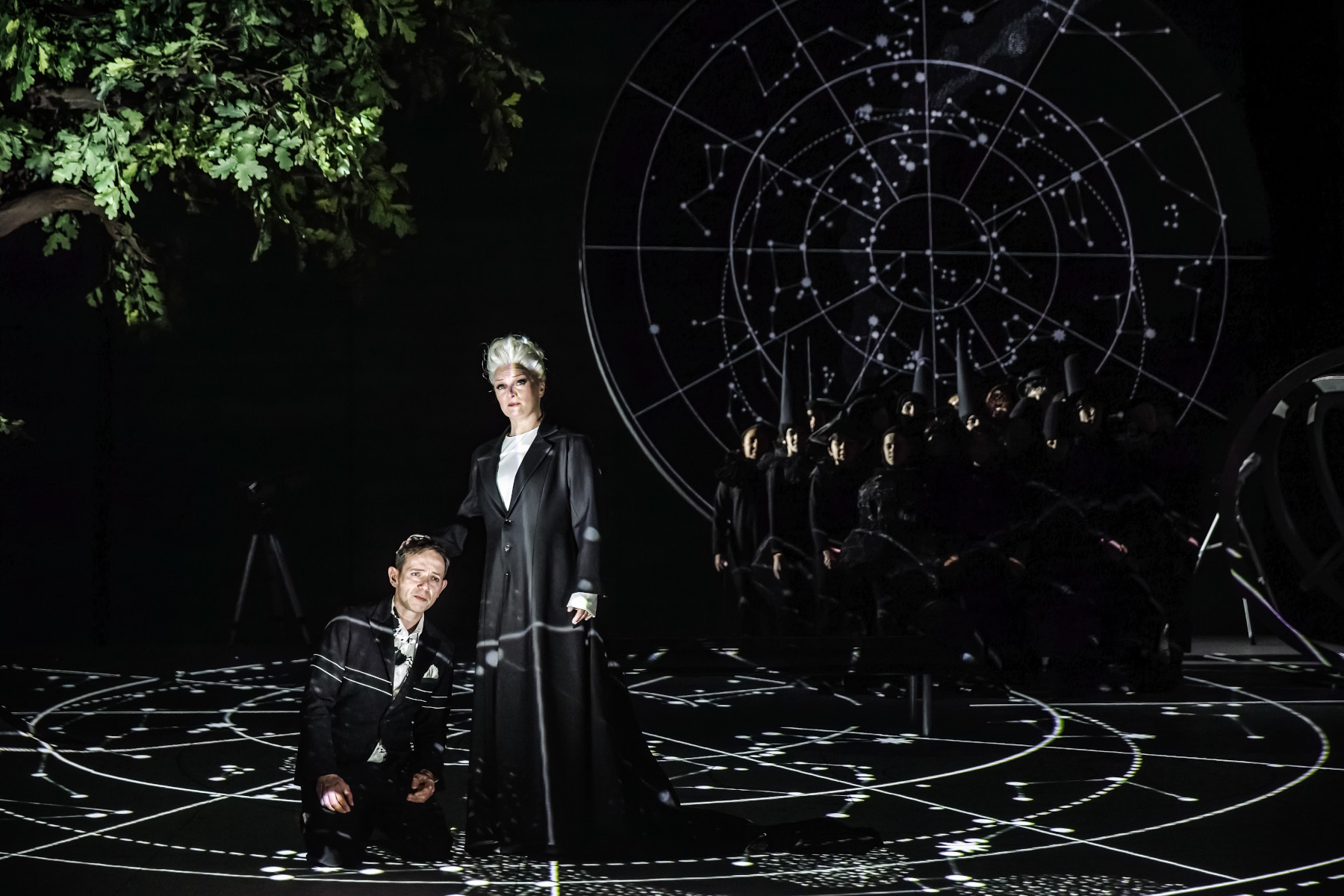
***
Psychobabble rather than magic takes over in Netia Jones’s new staging of the ever-popular Britten and Pears’s version of the Shakespeare play, and the result is a missed opportunity. Why so? Because the work is being staged at the fabulous Garsington Opera pavilion which is all glass and other directors have made great use of this and the glorious rural and garden surroundings in their concepts. We just have the back of stage open to the garden for a brief part of the opera but otherwise we are just in any other opera space. This would be fine if it was say, one of our regional opera companies touring production, like Welsh National Opera or Opera North, but as far as I am aware this is just a Garsington project. Plus a Proms performance. Even so it could have been adapted to make use of the fact that the opera is in, er, the outdoors, and we are at Garsington virtually outdoors.
Back to the psychobabble. We are confronted with the old trope of ink spots that those poor unfortunates who get analysed have to look at conjure up images. Here they are on a round screen but as the drama unfolds, they spread like a nasty rash across the mythological characters. At first, I thought the singers had some nasty tattoos they hadn’t covered up but, no, they spread like an advertisement I seem to remember for M&Ms.
Then we have a tree having grown through “the stage” taking a grand piano with it. It is high enough that Puck can slide along it and Oberon can imitate our composer by tinkling on the ivories. We also have an astrolabe and star charts in the sky and on the stage floor, and the play within the play recreates this set in miniature for their caper. We also have children, Garsington’s own Opera Youth Company, creeping in from the back and popping up through holes in the stage as the spirits and sprites. It is cute and they are very sweet, but it reminded me of that game where you test the speed of your reactions with a big hammer and whack them as they pop up. I don’t think this aspect of the evening deserves much more space or analysis. We also have annoyance in that not only do we of course have Bottom with his ass’s head but other characters are given animals heads for no explicable reason (well, apart from to the director I assume) such as Oberon with I think a bear or a black fox head.
The main problem is that this all distracts from the singers and the drama itself.
Thankfully Iestyn Davies is used to such things and his characteristic suave or slightly laid-back style worked well as a gentle Oberon. With Lucy Crowe indisposed we had lovely singing from Victoria Songwei Li as Tytania. Our quartet of lovers are dressed like 50s children and their antics rather match the look, the tenor of Caspar Singh as Lysander: the warm mezzo from Stephanie Wake-Edwards as Hermia, the secure baritone from James Newby as Demetrius, and strident Camilla Harris as Helena. The small roles of Theseus and Hippolyta were taken well by Nicholas Crawley and Christine Rice. I guess they were supposed to be some sort of mirror image of Oberon and Tytanya. Oberon and Theseus sported suits that were black and white versions of each other.
Of those pesky workers, the most appealing came from Richard Burkhard as Bottom but I know from other performances he is capable of more. The same can be said for the excellent John Savournin playing and dancing a slightly annoying Quince. Frazer Scott as Snug, Geoffrey Dolton as Starveling, James Way as Flute and Adam Sullivan as Snout, were charming but the humour was rather flat and the Thisby and Pyramus dull. Jerone Marsh-Reid’s Puck was sprightly but lacked sufficient cheek or charm and even the ending speech seemed flat and left me cold
No problems though with the Philharmonia Orchestra, which excelled under the baton of conductor and company artistic director Douglas Boyd enabling the real magic of Britten’s score to be the hero of the performance.

Images: Julian Guidera.